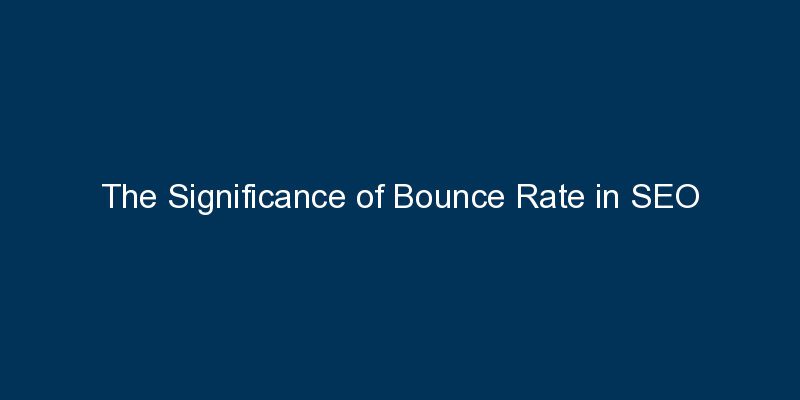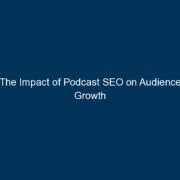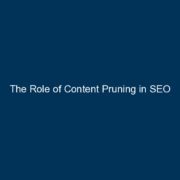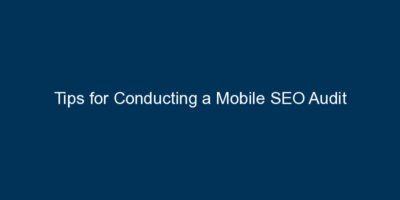Introduction: Understanding user behavior is a crucial aspect of effective SEO strategies. This blog explores the concept of bounce rate and its impact on search engine optimization. We’ll delve into what bounce rate is, why it matters for SEO, and how you can optimize your website to reduce bounce rates and improve overall performance.
1. Decoding Bounce Rate: Defining User Engagement Metrics: Begin by defining bounce rate and its role in assessing user engagement. Understand how bounce rate measures the percentage of visitors who navigate away from the site after viewing only one page, indicating potential issues with content or user experience.
2. The Connection Between Bounce Rate and User Satisfaction: Explore the correlation between bounce rate and user satisfaction. A high bounce rate may signal that visitors aren’t finding what they need, emphasizing the importance of providing relevant and engaging content.
3. Analyzing Different Types of Bounces: Understanding User Intent: Distinguish between different types of bounces to gain insights into user intent. Some bounces may be intentional, while others indicate dissatisfaction. Learn how to interpret bounce rate data to tailor your content strategy accordingly.
4. Bounce Rate vs. Exit Rate: Differentiating Metrics: Differentiate between bounce rate and exit rate to gain a comprehensive view of user behavior. Understand how these metrics offer distinct insights into when users leave your site and whether they exit from a specific page or after exploring multiple pages.
5. Factors Influencing Bounce Rate: Identifying Pain Points: Identify factors influencing bounce rate. Explore issues such as slow page load times, irrelevant content, poor navigation, or unclear calls-to-action that can contribute to a higher bounce rate.
6. Improving Content Relevance: Aligning with User Expectations: Learn strategies for improving content relevance. Align your content with user expectations by conducting keyword research, understanding search intent, and delivering information that meets the needs of your target audience.
7. Enhancing Website Navigation: User-Friendly Design Principles: Explore the role of website navigation in reducing bounce rates. Implement user-friendly design principles, intuitive navigation menus, and clear CTAs to guide visitors through your site and keep them engaged.
8. Optimizing Page Load Speed: Accelerating User Experience: Understand the impact of page load speed on bounce rates. Implement techniques such as image optimization, browser caching, and content delivery networks to accelerate page load times and enhance the overall user experience.
9. Crafting Compelling Meta Descriptions: Setting Expectations: Learn the importance of compelling meta descriptions. Craft meta descriptions that accurately represent your content, setting clear expectations for visitors and reducing the likelihood of a high bounce rate.
10. Utilizing Internal Linking: Encouraging Further Exploration: Explore the benefits of internal linking in reducing bounce rates. Strategically place internal links within your content to encourage visitors to explore additional pages, increasing overall engagement.
Conclusion: Bounce rate is a valuable metric that provides insights into user engagement and the effectiveness of your website. By understanding the factors influencing bounce rate, improving content relevance, enhancing website navigation, optimizing page load speed, crafting compelling meta descriptions, and utilizing internal linking, you can reduce bounce rates, improve user satisfaction, and ultimately boost your SEO efforts.























Comments